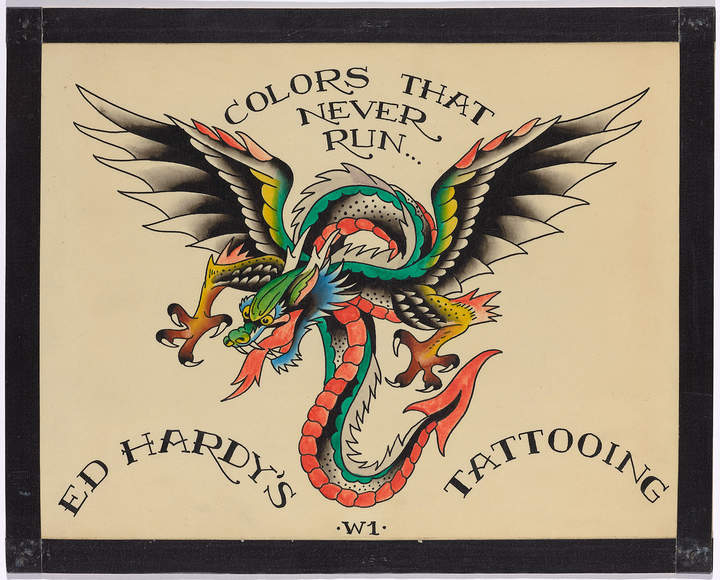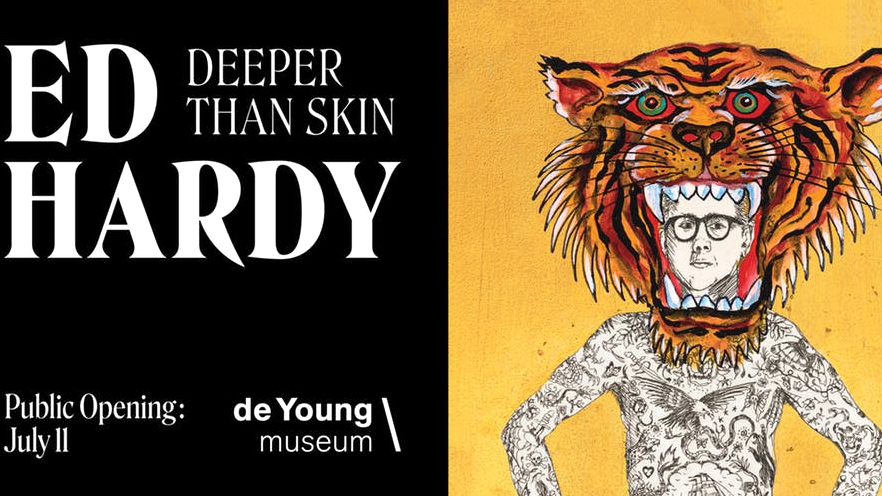
An art exhibition in San Francisco on American artist Ed Hardy reveals how traditional Chinese culture influenced the creation of some of his most famous designs.
A new retrospective "Ed Hardy: Deeper than Skin" will be on display from Saturday through October 6 at the de Young Museum, featuring more than 300 pieces ranging from paintings and drawings to prints and three-dimensional works, showcasing how Hardy integrated historical styles of art from all over the world with his practice of tattooing.

Don Ed Hardy's "Colors That Never Run, W1." /Photo via de young museum
Born in 1945, Hardy is considered one of the most important tattoo artists in the world. His designs went global when he licensed them to a clothing company in 2005, associating his name with fashion.
"While Ed is widely known as an iconic tattoo artist, we're excited that visitors will see another side of him and become more familiar with works from his own artistic practice," said exhibition organizer Karin Breuer during Wednesday's preview event.
Located in the Golden Gate Park, a popular tourist destination, the de Young Museum expects the exhibition to attract wider audiences, including Chinese visitors who may relate to the images influenced by Chinese culture.
One of the most notable pieces is Hardy's monumental "2,000 Dragons," a 500-foot-long scroll (about 152 meters), on which he painted 2,000 dragons.

"Ed Hardy: Deeper than Skin" exhibition at the de Young museum. /Photo via eventbrite.com
Inspired by Chinese painter Chen Rong's "Nine Dragons" (Song Dynasty, 1244), Hardy chose a scroll format and spent seven months painting a total of 2,000 various dragons on the scroll. He also carefully numbered each dragon in Chinese characters.
Hardy conceived the idea in 1976, waiting 24 years to bring the piece to life to honor the millennial year 2000 as well as the Year of the Dragon in the Chinese zodiac.
Hardy described this piece as a decisive turning point in its scale and expansive gesture that allowed him to explore abstract elements along with recognizable forms in his art.
The paintings and drawings that followed, including a 2012 series of dragon images, are notable for their large scale, dramatic color combinations and energetic brushwork.
The artist's fascination with Chinese culture can also been seen in his own tattoos. The photo of his tattooed body, also on display, shows a design of composite Chinese characters meaning "May the five blessings descend upon this home," and a traditional Chinese New Year greeting that reads "Ushering in wealth and prosperity."

Copyright © 2018 CGTN. Beijing ICP prepared NO.16065310-3
Copyright © 2018 CGTN. Beijing ICP prepared NO.16065310-3